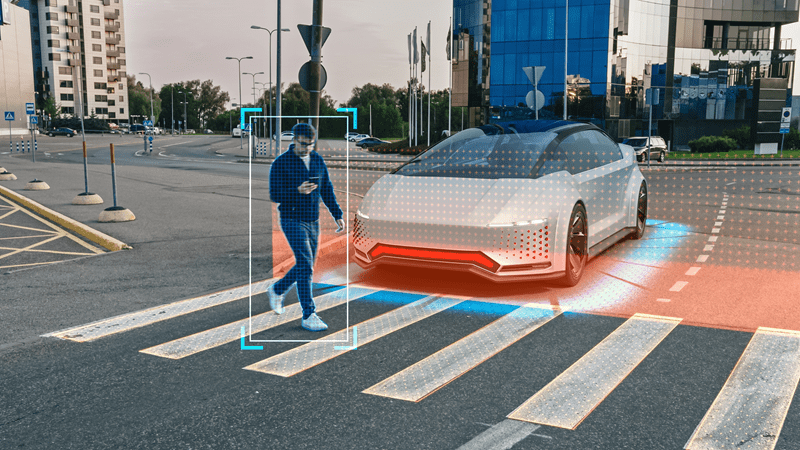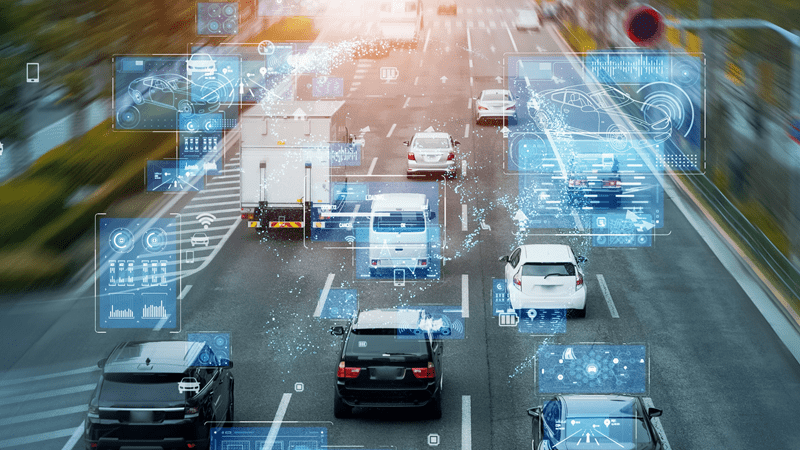How AI in Automotive Safety Enhances Driver Assistance

Driving in the present day does not merely mean wheels, speed, and roads, but rather technology driving behind the scenes to ensure you are safe. AI in the automotive industry is changing the road experience of cars that notice when there are vehicles near, or systems that tap your steering wheel when you are off the road. In this blog, we shall dwell on the topic of the use of artificial intelligence to transform driver aid systems so that driving becomes not only safer but also comfortable and even stress-free. We will also explore newer features such as ADAS, lane assist, collision alert, driver monitoring, and smart sensors, all of which play hand in hand to ensure a safer future for all the people already on the road.
The Rise Of AI In Automotive Safety
Artificial Intelligence has taken the position of the brain of the modern car. It assists cars in thinking, seeing, and responding in real-time. The automotive safety AI employs cameras, radar, LiDAR, and intelligent algorithms to detect the surroundings of the car. This technology is not only effective in enhancing convenience, but it also saves lives.
We have been witnessing the influx of automated driving systems in the past few years. Automakers are investing in AI to have capabilities that predict dangers even before they occur. Whether it is the unexpected appearance of a pedestrian or a hidden object, AI is also quicker than any other human being. We shall see how these smart systems collaborate to defend motorists and their passengers.
Understanding ADAS And Its Importance
There is something that we should know before we look deeper into individual features, and this is the foundation, which is the Advanced Driver Assistance Systems or ADAS.
What Is ADAS And Why Does It Matter
ADAS can be described as the set of technologies that help drivers manage the car and react to hazards. These systems can track the environment and provide timely information to the driver or even take corrective measures by placing sensors and cameras with AI algorithms that track the environment.
In the case of a car that is causing a delay in front of the other car, then ADAS may sound a collision alarm or even brake automatically. Such functions are now being introduced in most vehicles being sold in the USA.
How AI Makes ADAS Smarter
AI enhances ADAS by making it more adaptive and accurate. Instead of relying solely on pre-programmed reactions, AI learns from driving data. Over time, it can distinguish between normal and risky situations, improving its decision-making capabilities.
Imagine your car learning your driving habits and adjusting its responses accordingly—that’s the true power of AI-driven ADAS.
Lane Assist Technology For Safer Driving
Have you ever felt your car gently steer back when you start to drift from your lane? That’s lane assist in action—a crucial feature in AI-powered safety systems.
How Lane Assist Works
Lane assist uses cameras and sensors to track lane markings on the road. When your car senses that you’re unintentionally crossing the line, it sends a visual or audible warning. In some models, the car automatically makes small steering corrections to keep you centered.
AI’s Role In Improving Lane Detection
AI allows lane assist systems to operate smoothly even under challenging conditions—like faded road lines, poor lighting, or bad weather. By learning from real-world driving data, AI improves its ability to recognize lanes with greater accuracy.
This means fewer false alarms and a more comfortable driving experience. It’s especially useful on long highway drives, where driver fatigue can cause unintentional drifting.

Collision Warning Systems That React Before You Do
Accidents can happen in a split second. But with AI-powered collision warning systems, your car can sense danger before you even notice it.
How Collision Warning Systems Work
Using radar, cameras, and smart sensors, these systems constantly monitor your surroundings. If the car detects a potential collision—say, with another vehicle or pedestrian—it immediately alerts you. Some systems even apply the brakes automatically if you don’t react in time.
AI-Powered Prediction And Prevention
AI takes this a step further. Instead of merely reacting, AI predicts collisions by analyzing speed, distance, and movement patterns. It can even factor in human-like reasoning—such as predicting that a pedestrian might suddenly step onto the road.
This predictive capability is what makes AI in automotive safety so revolutionary. It doesn’t just protect you; it protects everyone sharing the road.
Driver Monitoring Systems For Safer Habits
Even the best drivers get distracted or tired sometimes. AI-driven driver monitoring systems are designed to detect those moments before they become dangerous.
How Driver Monitoring Works
These systems use cameras and sensors to track your eye movement, head position, and even facial expressions. If you start to look away from the road for too long or show signs of drowsiness, the system sends a gentle alert—sometimes even vibrating the steering wheel or sounding an alarm.
AI’s Emotional Intelligence On The Road
The peculiar feature of these systems is the use of AI to learn human behavior. With time, they will be able to distinguish normal glances and actual distractions.
Think of the time when there was a system that knew when you were merely glancing through your mirrors as opposed to losing your concentration- then that is the extent of the sophistication of driver monitoring. It is as though you have some kind of co-pilot who is never fatigued.
Smart Sensors Bringing Everything Together
Whereas AI gives the system a brain, smart sensors play the role of eyes and ears. They constantly gather information on the performance and conditions of the car.
Different Types Of Smart Sensors
Modern vehicles have several sensor varieties: radar, ultrasonic, and LiDAR sensors, which are used to scan the surroundings, evaluate distant objects, and 3D map the area, respectively. Lane markings, pedestrians, and traffic signs are captured on cameras.
Collectively, they supply the AI with information in the car, which forms a real-time image of everything around the car.
AI’s Integration With Smart Sensors
The AI combines all data provided by all these sensors and deciphers it almost immediately. It is able to pick trends, filter irrelevant noise, and make decisions on the go.
As an example, in case a bike rider emerges out of a blind corner, sensor data can be analyzed effectively by the AI much quicker than a human reaction time, and automatic brakes.
The combination of AI and intelligent sensors means that your car is lawfully aware of everything that occurs near it all the time and offers an extra layer of security, being almost instinctual.
Final Thoughts
Driving was once solely a human experience, skillful, emotive, and uncertain. However, AI has entered the world in automotive safety, so now that experience is turning positive. AI does not eliminate control; it only improves it. It allows the drivers to be alert, stay out of danger, and feel that they are backed up behind the wheel. With the increased adoption of these systems in the American roadways, there is a future to expect where technology is not just going to drive us down the road, but will also ensure that we are secure in every turn.
This content was created by AI

